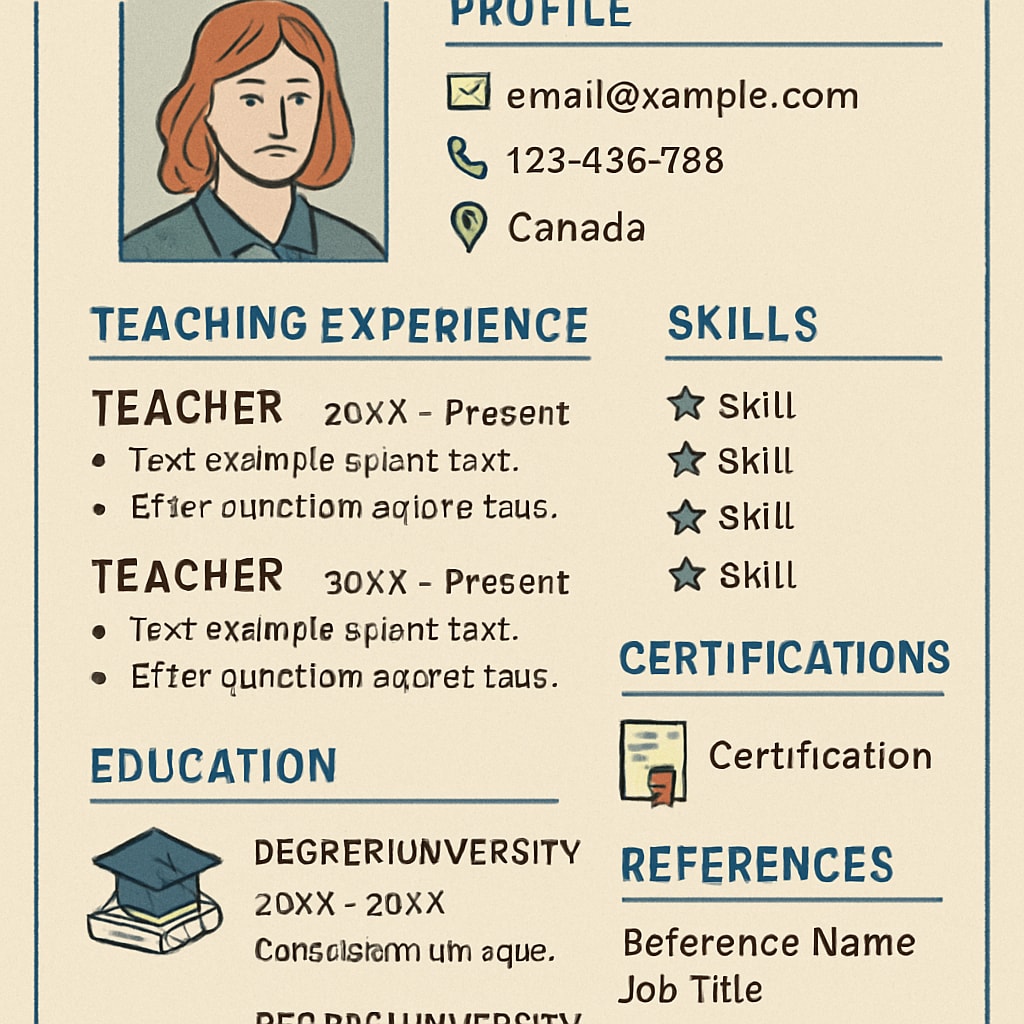For K12 educators dreaming of advancing their careers internationally, entering the Canadian teaching market can be a remarkable opportunity. However, building a resume that meets the unique expectations of the North American job market can be daunting. If you’re seeking help to modify your resume for Canada, you’re not alone. This article will guide you through the specific requirements of Canadian educational institutions and provide actionable steps to help you stand out as a qualified candidate in the competitive landscape.
Understanding the Canadian Education System
Before diving into resume writing, it’s important to understand the Canadian K12 education system. Canada’s education sector is managed at the provincial level, meaning hiring requirements and curriculum standards can vary across provinces. Nevertheless, most schools emphasize student-centered teaching methodologies, cultural inclusivity, and innovative learning approaches.
For example, Canadian schools highly value teachers who can integrate technology into the classroom and adapt to diverse student needs. Therefore, your resume should reflect your ability to meet these expectations. Familiarize yourself with specific provincial requirements on official websites such as the EduCanada platform.

Key Components of a Canadian Teaching Resume
Unlike some other countries, Canadian resumes generally do not include personal details like photographs, marital status, or age. Instead, the focus is on professional accomplishments and qualifications. Below are the essential sections to include:
- Contact Information: Include your full name, email address, phone number, and LinkedIn profile. Ensure these details are professional and up-to-date.
- Professional Summary: A concise paragraph summarizing your teaching philosophy, key achievements, and skills.
- Certifications: List relevant teaching certifications such as TESOL, OCT (Ontario College of Teachers), or any provincial qualifications.
- Teaching Experience: Highlight your roles, responsibilities, and measurable achievements (e.g., “Improved student math scores by 20% over two years”).
- Education: Clearly state your degrees, institutions, and graduation dates.
- Skills: Focus on classroom management, curriculum development, and adaptability to multicultural learning environments.
Additionally, tailor your resume to match the job description, using keywords that align with the school’s requirements.
Optimizing Your Resume for the Canadian Market
When transitioning to the Canadian market, it’s essential to make strategic adjustments to your resume. Here are some tips:
- Use Action Verbs: Start bullet points with dynamic verbs like “designed,” “implemented,” or “collaborated” to emphasize your accomplishments.
- Quantify Achievements: Include numbers to illustrate your impact, such as “led a team of 5 teachers to develop a STEM curriculum adopted by 200 students.”
- Include Volunteer Experience: Canadian employers value community involvement. Mention any volunteering or extracurricular activities that demonstrate your commitment to education.
- Proofread Thoroughly: Errors in grammar or formatting can make a negative impression. Use tools like Grammarly or seek professional editing services.
For more detailed tips, consult resources like the Resume Guide on Britannica.

Common Mistakes to Avoid
While crafting a Canadian teaching resume, avoid these common pitfalls:
- Overloading with Information: Keep your resume concise (1-2 pages) and relevant to the job you’re applying for.
- Exaggerating Skills: Be honest about your experience. Canadian schools may verify your claims during the interview process.
- Neglecting Soft Skills: While hard skills are important, don’t forget to emphasize soft skills like communication, empathy, and adaptability.
By avoiding these mistakes, you can create a polished and professional resume that resonates with Canadian employers.
Final Thoughts: Preparing for the Canadian Education Journey
Adapting your resume to the Canadian teaching market is a crucial step in your international career journey. By understanding the unique requirements of Canadian schools, emphasizing relevant skills, and tailoring your application materials, you can increase your chances of landing your dream teaching job. If you’re facing challenges in the process, don’t hesitate to seek professional help or consult resources to refine your approach.
With a well-prepared resume and a proactive mindset, you’ll be well on your way to making a meaningful impact in Canada’s K12 education system.
Readability guidance: Use short paragraphs to enhance readability. Include lists to summarize key points and maintain a logical flow with transition words like “however” and “in addition.”


